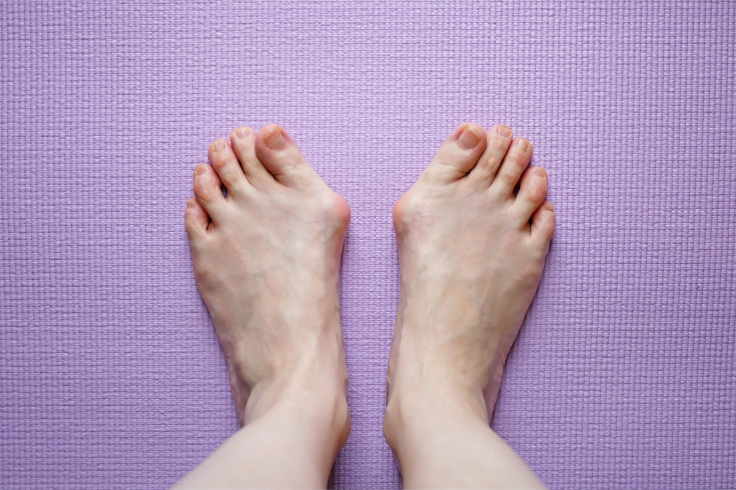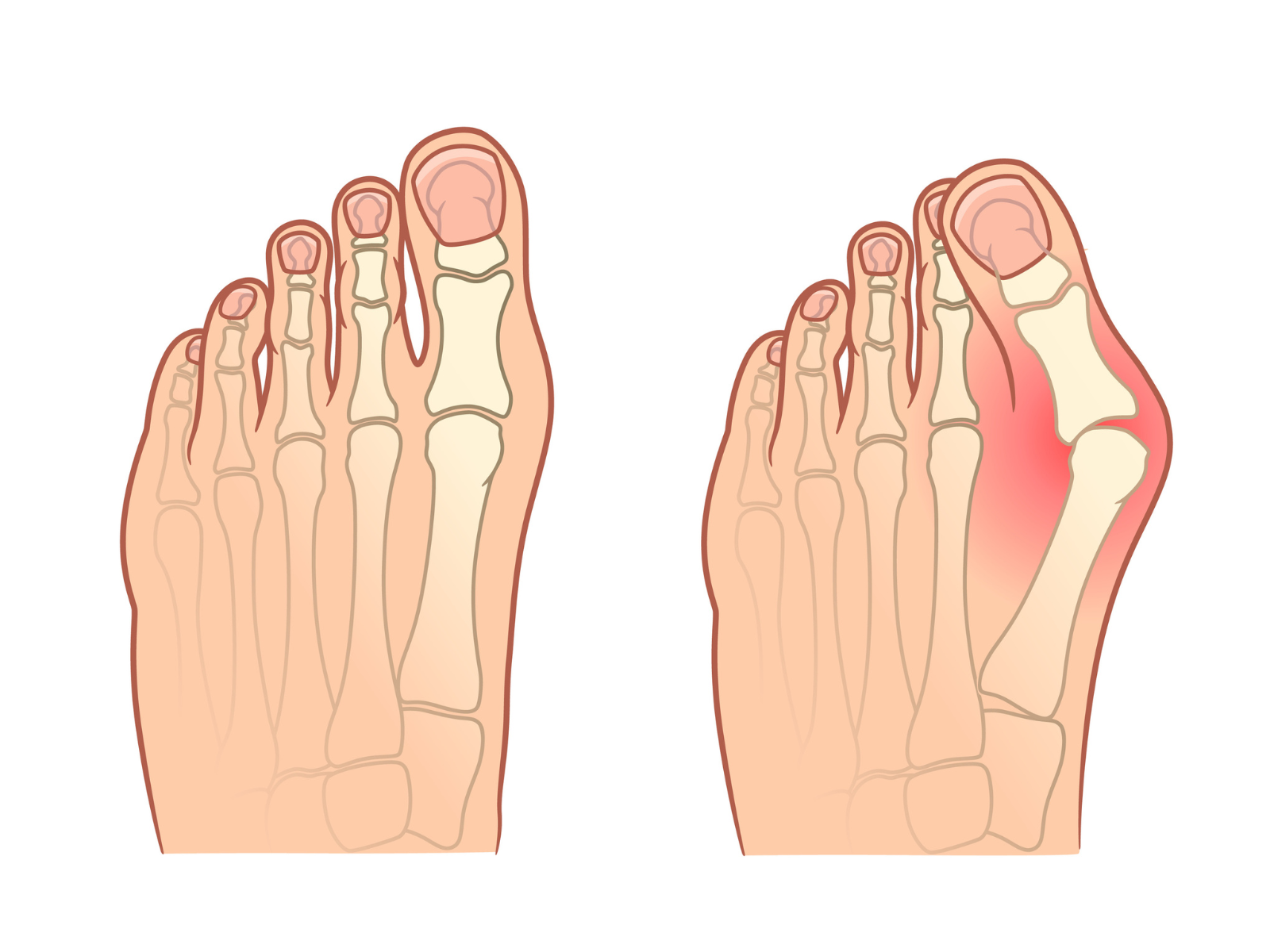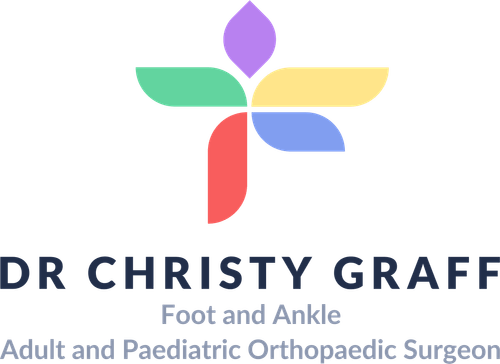Minimally Invasive Bunion Surgery (Keyhole Bunion Surgery)
What is Minimally Invasive Bunion Surgery?
Minimally Invasive Bunion Surgery is a surgical procedure designed to correct bunions using small incisions and specialised instruments. Bunions, also known as hallux valgus, occur when the big toe deviates towards the smaller toes, causing a bony bump on the side of the foot. This type of surgery typically involves realigning the bones and soft tissues of the foot to restore proper toe alignment, reduce pain, and improve function.
Unlike traditional open surgery, this technique uses smaller cuts, resulting in less trauma to the surrounding tissues and quicker recovery times.

Who is Suitable for Minimally Invasive Bunion Surgery?
Patients may be suitable for minimally invasive bunion surgery if they:
- Have bunions that significantly impact daily activities.
- Experience persistent pain or discomfort that does not improve with conservative treatments (e.g., orthotics or wide shoes).
- Have tried nonsurgical treatments without sufficient relief.
- Are in good overall health and do not have conditions that impair healing, such as uncontrolled diabetes or severe arthritis.
Benefits of Minimally Invasive Bunion Surgery
- Reduced Recovery Time: Smaller incisions lead to faster healing than traditional open surgery.
- Minimal Scarring: Small cuts result in less noticeable scars.
- Less Pain and Swelling: Reduced trauma to soft tissues often means less postoperative pain and swelling.
- Improved Precision: Modern tools allow surgeons to correct deformities with greater accuracy.
- Lower Risk of Complications: A minimally invasive approach minimises the risk of infection and other complications associated with open surgery.
- Outpatient Procedure: Many patients can go home on the same day as the surgery.
Types of Bunion Surgery
- Chevron Osteotomy: Involves making a small cut in the metatarsal bone to realign the big toe.
- Scarf Osteotomy: Used for moderate deformities, it reshapes and repositions the first metatarsal using open techniques and small screws.
- Minimally Invasive Surgery: Tiny punctures instead of larger incisions are used to perform bone adjustments.
- Lapidus Procedure: Fuses the joint at the base of the first metatarsal to stabilise and correct severe deformities in patients with connective tissue disorders.
- Akin Osteotomy: Adjusts the bone of the big toe itself to improve alignment.
Alternative Options to Minimally Invasive Bunion Surgery
- Conservative Treatments:
- Wearing proper footwear (e.g., wide-toe box shoes).
- Using orthotic devices or bunion pads.
- Applying ice to reduce swelling.
- Taking over-the-counter pain relievers.
- Engaging in physiotherapy or exercises to strengthen the foot.
- Injection Therapy:
- Corticosteroid injections to reduce inflammation and pain in the short term.
- Traditional Open Surgery:
- Recommended for severe or complex bunion deformities or surgeon/patient preference
- Non-Surgical Correctors:
- Toe spacers, splints, or bunion correctors temporarily improve alignment.
- Lifestyle Modifications:
- Weight management to reduce pressure on the feet.
- Avoiding activities that exacerbate pain.
Preparation Before a Minimally Invasive Bunion Surgery
Preparation is essential to ensure a successful outcome. Steps include:
- Medical Evaluation:
- Consult Dr Graff for a thorough evaluation of your condition.
- Provide details of your medical history, including medications and allergies.
- Preoperative Instructions:
- Follow fasting guidelines if general or local anesthesia will be used.
- As your doctor advises, discontinue blood-thinning medications (e.g., aspirin, warfarin).
- Lifestyle Adjustments:
- Avoid smoking, as it can impair healing.
- Maintain a healthy diet to promote recovery.
- Home Preparation:
- Arrange a comfortable space for recovery, including easy access to essentials.
- Arrange Transportation:
- Ensure someone is available to drive you home after the surgery.
Minimally Invasive Bunion Surgery Procedure
- The surgery involves several small incisions on the inside of the foot or one long incision. Dr. Graff usually performs it through a keyhole.
- The top of the bone near the bunion is cut, and the bump is shaved off.
- The top of the bone is shifted and held with two screws.
- The bone in the toe (the phalanx) is usually cut and held with a screw.
- Often, the lesser toes (toes 2-5) may also need a procedure.

The Hospital Stay
- You wake up with bulky bandages and a post-op Darco shoe.
- Your foot will be elevated overnight, and you have antibiotics through a drip (you may go home the same day if your surgery is in the morning).
- You will need blood thinners to prevent clots in the leg and 1g of vitamin C daily for 6 weeks.
- You can walk on foot the same day, but only for necessary things like going to the toilet. Otherwise, your foot will become too swollen and painful.
At Home
- You will need medications for pain relief; please take two panadol with meals and at night. The first night is often when the worst pain is experienced. Please take a stronger painkiller before you go to bed on the first night after surgery.
- You will need blood thinners to prevent blood clots and 1g of vitamin C daily.
- Please leave all dressings intact until your post-op appointment
- You will need to attend your post-op appointment in 2-3 weeks, where the wounds will be checked
- After this, you can shower normally and pat the dressings dry.
Minimally Invasive Bunion Surgery Rehabilitation
All patients are different. These timelines are only guides; some patients may progress faster or slower than others. The rehab may also be slower if both feet have surgery simultaneously.
0 - 2 Weeks
- You can weight bear in your Darco shoe, but only for essential activities such as getting food or going to the toilet.
- Keep the dressings on at all times like a plaster.
- You can remove the Darco shoe to sleep and rest.
- Pain relief: Please take regular Panadol with meals and before bed.
- Please take blood thinners and vitamin C as prescribed
2 - 3 Weeks
- Your dressings are changed at your post-op appointment with Dr Graff, and an x-ray is taken.
- You can then shower (you may need a shower chair) and start range-of-motion exercises with physio.
- You can start static strengthening and balance exercises with physio.
6 Weeks
- You will have an appointment with Dr. Graff and an X-ray. If your swelling is OK, you can wear normal shoes.
- At 6 weeks, you may want to do physio if you must return to sport/work.
12 Weeks
- You will have another appointment with Dr Graff and an x-ray.
- You may feel more ‘yourself’, but swelling (especially at night) can continue for several more months.
- The final results of surgery are felt 6-12 months postoperatively.
When can I return to work/school?
- 3-4 weeks if your job requires seated work
- 10-12 weeks if your job requires prolonged standing.
- 3-6 months if your job requires heavy labour.
When can I drive?
- 2-3 weeks if the surgery is on your left foot (if driving an automatic car)).
- 6 weeks if surgery is on your right foot (when you are no longer in the boot).
When can I return to sport?
- It will take three months, but this is a transition. Start with walks, then running, and then training. Your physiotherapist can guide you on when your strength and range of motion are back to normal so that you can return to competitive sport.
Minimally Invasive Bunion Surgery Prognosis
- High Success Rate: Most patients experience significant pain relief and improved foot alignment.
- Cosmetic and Functional Improvements: The foot's appearance and function are often restored.
- Long-Term Benefits: Proper post-surgery care ensures lasting results, though maintaining healthy footwear habits is crucial to prevent recurrence.
Minimally Invasive Bunion Surgery Risks
While the procedure is generally safe, potential risks include:
- Anaesthetic problems
- Under or over-correction of the deformity
- Nerve injury
- Blood clots
- Infection
- Stiffness
- Recurrence
- Ongoing pain
- Further surgery
What if Minimally Invasive Bunion Surgery is Delayed?
Delaying surgery can lead to:
- Progressive Deformity: The bunion may worsen, causing increased pain and difficulty walking.
- Joint Damage: Prolonged misalignment can lead to arthritis in the big toe joint.
- Chronic Pain: Pain may become persistent and harder to manage with conservative treatments.
- Lesser toe deformities: Toes 2-5 may be impacted by overcrowding (see Lesser Toe Deformities)
- Reduced Mobility: Limited movement may impact daily activities and quality of life.
- Complications in Surgery: Severe deformities may require more extensive surgery and a longer recovery.
Timely surgery and proper postoperative care can prevent these complications and improve overall outcomes.
Please see the ‘Hallux Valgus/Bunions’ Information sheet here.
Contact Us
If you want more information or have any questions or problems, please contact Dr Graff at admin@christygraff.com or call the rooms at 0493 461 133.
